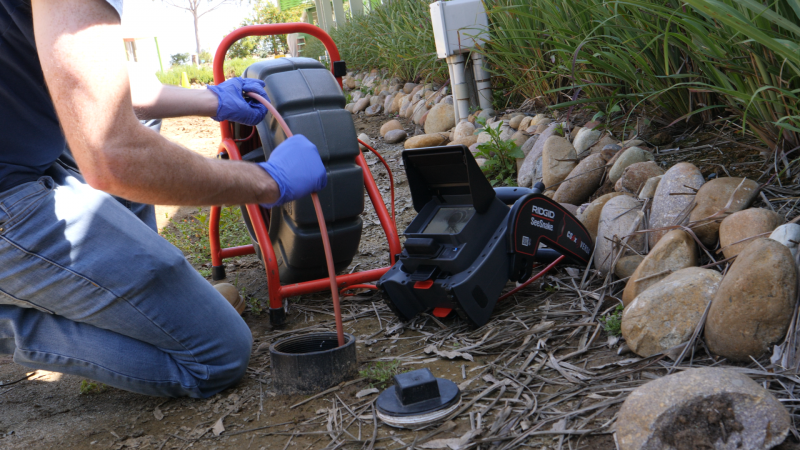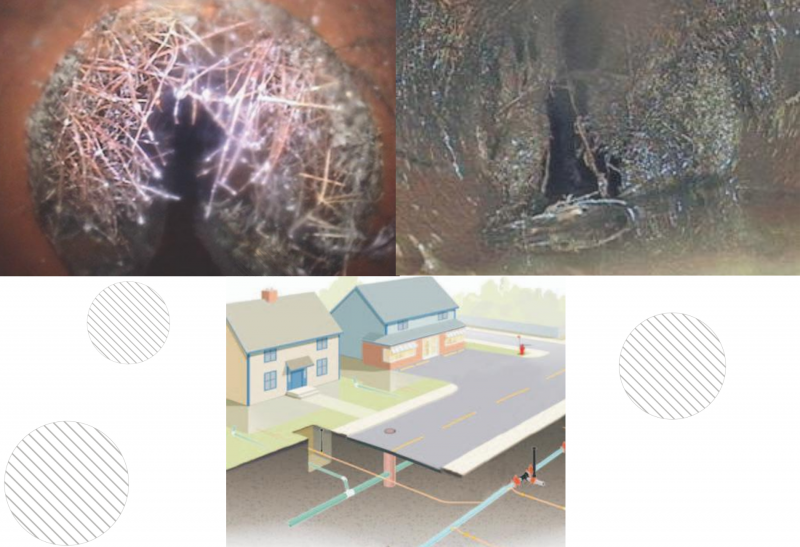Top Left: Root Intrusion
Top Right: Collapsed/broken pipe
What is a Pipe Inspection?
Pipe inspections involve pushing a camera through pipes and drains to examine the condition of the pipes’ interior. Inspections can help locate problems such as attached deposits, open joints, holes, cracked roots, surface damage, fractures, root intrusions, and collapsed or broken pipes.
If a problem area is discovered, a specialized locating instrument can be used to pinpoint the camera’s position and depth underground so that repairs can be made.
Cameras are sized to accommodate lines commonly found in residential and commercial properties:
- Main lateral to the street or septic
- Branch lines from toilets, tubs, sinks, and showers
Deliverables
Advanced inspection systems enable comprehensive inspection reports with video and still images and may be provided via printed copy, USB thumb drive, email, or online with an html webpage or cloud storage solutions.
The value of a pipe inspection
When purchasing a home, a pipe inspection can reveal existing defects before they become a problem for the homeowner. In fact, a growing list of municipalities are mandating pipe inspections before property can be sold.
Regular inspections help determine the pipe’s interior conditions to avoid untimely backups and minimize inconvenient and costly emergency repairs. The upfront costs of pipe inspections can save thousands of dollars down the road.
RIDGID® SeeSnake® pipe inspection systems include best-in-class camera reels to suit a variety of applications and Wi-Fi enabled digital reporting monitors. Contact your local RIDGID rep to learn more.



